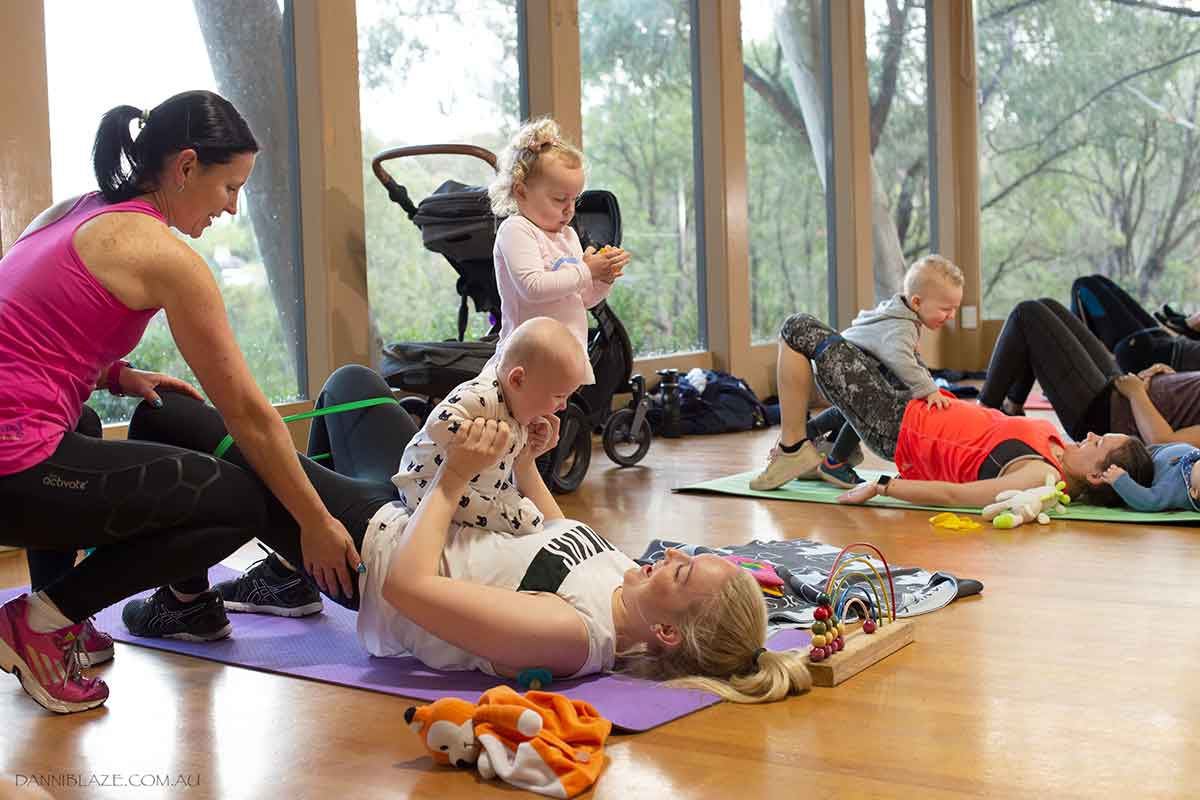Actionable steps to strengthen your pelvic floor post-birth

Did you know that 1 in 3 women who have ever had a baby wet themselves?
That’s a pretty scary statistic, wouldn’t you agree?
While you are pregnant, you will receive so much advice on the dos and don’ts. But the one topic people don’t generally talk about is your pelvic floor and if you choose NOT to do pelvic floor exercises how it can affect your pregnancy and recovery period.
If you are currently suffering from the following due to weak pelvic floor muscles then I advise you to seek help immediately:
- Leak urine when you cough, sneeze, lift, laugh or do exercise
- You can’t control passing wind
- You feel a strong and urgent need to empty your bladder or your bowel
- You do not have good support for your bladder, uterus or bowel (www.pelvicfloorfirst.org.au)
Did you know that when it comes to pregnancy, labour and birth, and your recovery, that your weight gain and your pelvic floor play a huge role?
As a midwife having been exposed to lots of births, caesareans and caring for women post-birth, the part that scares me the most is weight gain and how women just let themselves go while they are pregnant, as they think eating for 2 or 3 is ok. Well it’s NOT!
Weight gain puts a whole lot of strain on the body, your ligaments and most of all your pelvic floor. Along with excessive weight gain and how it can increase the risk of chances of complications during your pregnancy, there are still things that can create bladder and bowel issues from your birth as well.
So what do you do?
Whether you are pregnant, planning a pregnancy or have had a baby, it is important to remember to do your pelvic floor muscle exercises and activation of your lower transverse abdominal muscles. This will help to keep your muscles strong if you are conceiving, pregnant and help them to recover more quickly after your baby is born.
All women should do pelvic floor exercises for life. From conception to motherhood and beyond. WHY? To help prevent lifelong complications and minimise the chances of a prolapse. As a midwife and certified pregnancy and post-birth fitness trainer, and a MumSafe™ trainer, I can’t stress enough about why strengthening correctly from the inside out is so important.
Take these actionable steps to enhance your pregnancy and to minimise your chances of incontinence during pregnancy and post-birth.
- Exercise regularly with a trusted fitness instructor – You can’t get any better than Fit For 2 and the MumSafe™ team.
- Nutrition – It’s vital that you are focussing on lots of veg, good fats, moderate protein and low carbs to keep your body fuelled and to keep weight gain down.
- Know how to activate your pelvic floor and transverse abdominal muscles.
- Complete pelvic floor exercises 3 times a day.
- Avoid heavy lifting.
- While you exercise make sure you breathe and not hold your breath so you don’t place pressure down onto your pelvic floor. Exhale with the movement.
- When you lift or pick up anything remember to pick up your pelvic floor at the same time (this includes during exercise as well).
- Focus on your posture. Good habits will also assist with breastfeeding.
- Your centre of gravity will change during your pregnancy. Focus on strengthening your core by doing your pelvic floor exercises and activating your TA.
- When you cough or sneeze make sure you activate your pelvic floor first.
- When you exercise, if you feel unsupported then utilise a tool like a Fitball to create stability or a chair if needed.
- Always keep your feet close together, avoid wide stances during exercise if it aggravates you. Your pelvic floor activation is number one.
- Ensure you can activate your pelvic floor in all positions. Lying, sitting, standing, all fours and on your side.
- Don’t activate your glutes while performing pelvic floor exercises. If you are then point your toes towards each other to turn your glutes off.
- Build up your pelvic floor to 10 sec sustained holds, but do it gradually so you are building strength.
- If your body is tired then rest. Listen to your body at all times. A tired pelvic floor is no benefit to you if your body is exhausted.
- Avoid exercises which create pain and ask your fitness instructor for a safe modification.
- See a Women’s Health Physio if you are currently suffering from incontinence or if you know that you are at risk, or if you don’t know how to activate your pelvic floor.\
- Make sure you return back to pelvic floor exercises within 24 hours post birth, even if you have perineal stitches, to help with recovery.
- In labour, be active as much as you can and speak to your caregiver about not pushing for more than 2 hours to minimise strain on your pelvic floor.
- Download the pregnancy pelvic floor app from Pelvic Floor First.
Anita Guerra is a Registered Midwife and Certified Fitness Trainer. She runs Fit For 2 in South Morang, Victoria. To find out more about her and get in touch, click here.
You can also find her on Instagram.
Anita Guerra runs Fit For 2 in Victoria, . Learn more about Anita and Book your Trial today.
